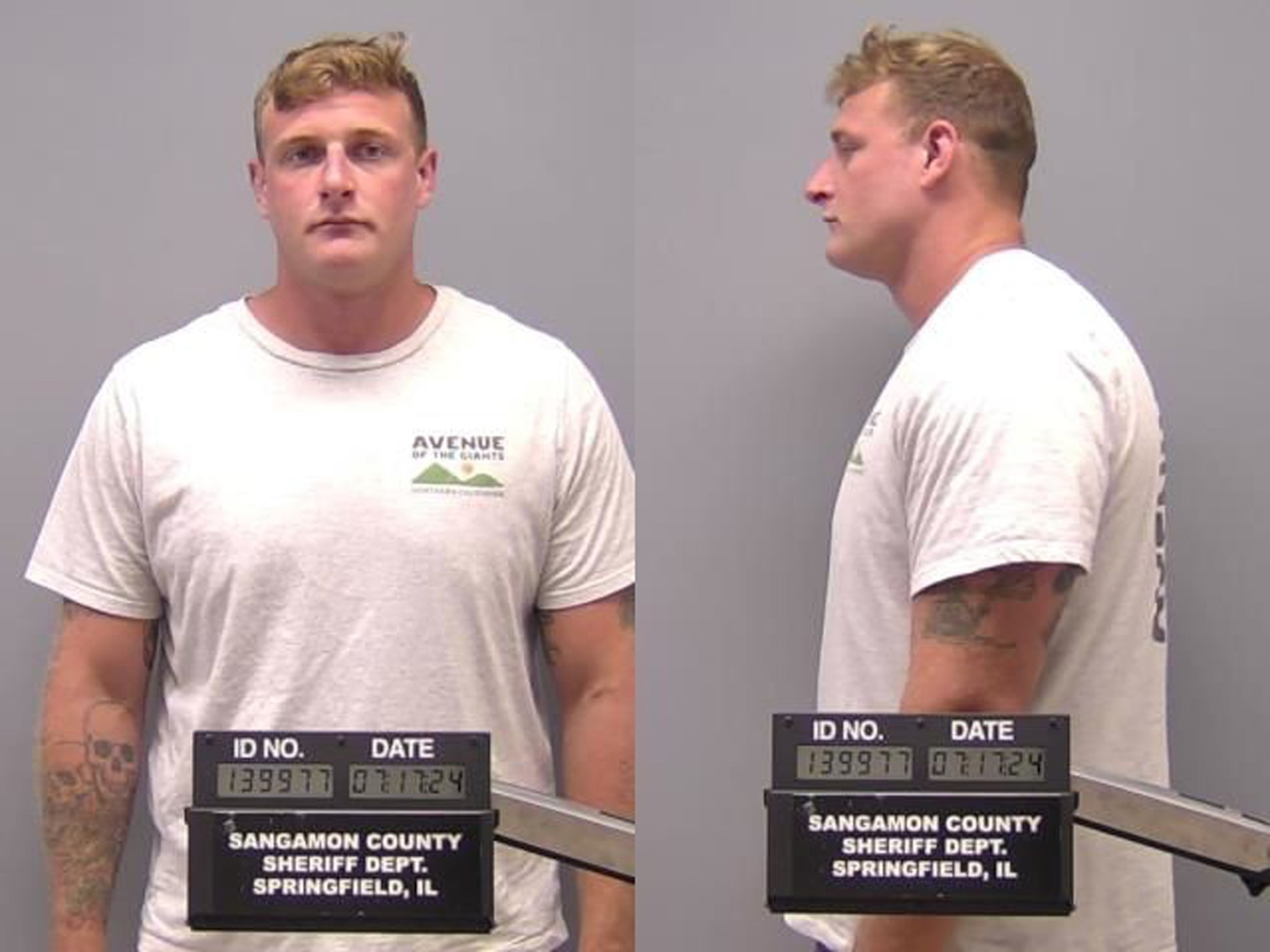Former Illinois sheriff’s deputy Sean Grayson said he feared for his life during his encounter with Sonya Massey, the mother of two who he fatally shot in her home after she called 911 to report a prowler, according to new documents released by the Sangamon County Sheriff’s Office (SCSO).
The documents are a compilation of field case reports from various deputies who were called to the scene following the shooting of Massey, who was shot in the head during the July 6 incident. Included in the reports is an account from Grayson, who now faces three counts of first-degree murder, aggravated battery with a firearm and official misconduct in Massey’s death. The former deputy is being held without bond while awaiting trial.
“While on scene, I was in fear Dep. (redacted) and I were going to receive great bodily harm or death. Due to being in fear of our safety and life, I fired my duty weapon,” Grayson wrote in his field case report.
Grayson’s report detailed his account of what happened when Grayson and a fellow Sangamon County deputy were called to Massey’s home.
“I approached the house and knocked on the door multiple times. I could see someone moving around inside the residence, but no one would open the door,” Grayson wrote.
After Massey, 36, came to the door, Grayson asked her a few questions, according to bodycam video of the exchange reviewed by ABC News. The then-deputy wrote in his report that “it seemed as if Sonya’s mind was all over the place and not able to focus or have a conversation. Sonya stated she was doing OK and had taken her medicine.”
Once inside the home, the unnamed deputy who was with Grayson checked the home for a possible intruder while Grayson spoke with Massey. While talking to Massey, Grayson said he heard a crackling noise, then noticed a large metal pot of “unknown liquid” on the stove. He asked the other responding deputy to turn the stove off before a fire started in the residence, according to the report.

Sonya Massey was shot and killed by former deputy Sean Grayson on July 6, 2024.
Courtesy Ben Crump
That is when Massey, who’d been sitting on the couch, went to the kitchen to turn off the stove, the video shows. She grabbed the large pot and walked toward the sink, acting as if she was going to pour out the water in the sink, according to Grayson.
“With both hands on the pot, Sonya turned to face me holding the pot,” the deputy wrote. “I feared Sonya was going to throw boiling liquid on to us, causing great bodily harm to or death.”
“I advised Sonya to put the boiling liquid down. Sonya stated she was going to rebuke me in the name of Jesus. She stated this twice,” Grayson wrote. “I interpreted this to mean she was going to kill me.”
At that point, Grayson said he drew his weapon and pointed it at Sonya, giving her verbal commands to drop the pot of boiling liquid. Upon seeing his weapon, Massey crouched down. Body camera video of the incident recorded Massey repeatedly apologizing to the deputies.
“Sonya stood up from a crouched position, grabbing the pot, raising it above her head and throwing the boiling substance at me. I was in imminent fear of getting boiling liquid to my face or chest, which would have caused great bodily harm or death,” Grayson wrote in his report.
“I fired my duty weapon in Sonya’s direction. I observed Sonya fall to the ground behind the counter,” Grayson said.

Sean Grayson fatally shot Sonya Massey while responding to her 911 call for help.
Sangamon County Sheriff’s Office
A review of Grayson’s body camera footage, case report, use of force report, as well as evidence from the unnamed attending deputy who was present during the incident, concluded that Grayson had violated SCSO policies and procedures.
The internal investigation, conducted by the Sangamon County Sheriff’s Department Division of Professional Standards, found Grayson had violated policy by immediately escalating to deadly force, citing that “body camera video shows that the inappropriate escalation of force set in motion a series of events that led to Deputy Grayson shooting the decedent in the head,” despite Massey’s “non-aggressive behavior.”
The department also found that Grayson did not abide by the Sheriff’s Office Standard of Conduct after his body camera recorded statements made by him that violated policy, including calling Massey by expletives, and saying, “I’m not even going to waste my med stuff then,” after bringing his medical kit and not providing aid to Massey.
Grayson also violated the department’s policy and procedures for providing medical aid and response when he discouraged his fellow attending deputy from providing aid to Massey, saying, “nah, headshot dude; she’s done,” “let her just, there is nothing we can do,” and letting approximately 3 minutes, 40 seconds go by between the time Massey was shot and when Grayson brought in his medical kit, according to the investigation.
Additionally, Grayson was found to be in violation of policy by not having activated his body camera until after shooting Massey, as well as insubordination after refusing to answer questions during his internal affairs interview.
Sean Grayson’s attorney declined ABC News’ request for comment.
New documents have recently been released in the case of former deputy sheriff, John Smith, who claimed to fear for his life during the investigation into the killing of Sonya Massey. The new information sheds light on the challenges and dangers faced by law enforcement officers in high-profile cases.
Smith, who was involved in the initial investigation into Massey’s death, has stated that he received threats and felt unsafe during the course of the investigation. The new documents reveal that Smith reported feeling targeted and harassed by individuals connected to the case, leading him to fear for his safety.
The case of Sonya Massey, a young woman found dead in her home under suspicious circumstances, garnered significant media attention and public interest. As a result, law enforcement officers involved in the investigation faced intense scrutiny and pressure to solve the case quickly.
Smith’s claims of fearing for his life highlight the risks and challenges faced by law enforcement officers in high-profile cases. The pressure to solve the case, combined with threats and harassment from individuals connected to the investigation, can create a dangerous and stressful environment for those involved.
The release of these new documents raises questions about the safety and well-being of law enforcement officers working on sensitive cases. It also underscores the importance of providing support and resources to officers who may be facing threats or harassment in the line of duty.
As the investigation into Sonya Massey’s death continues, it is crucial that law enforcement agencies take steps to ensure the safety and security of their officers. The risks and challenges faced by those working on high-profile cases should not be overlooked, and measures should be put in place to protect the well-being of all individuals involved in the investigation.
In conclusion, the new documents revealing John Smith’s claims of fearing for his life in the Sonya Massey killing case shed light on the dangers and challenges faced by law enforcement officers in high-profile investigations. It is essential that steps are taken to ensure the safety and well-being of officers working on sensitive cases, and that support and resources are provided to those facing threats or harassment in the line of duty.



